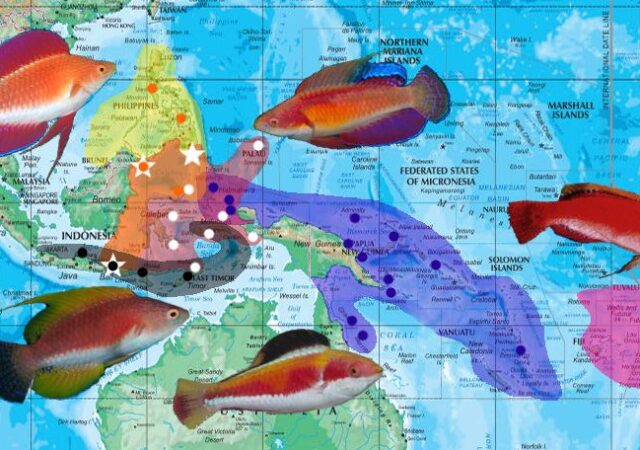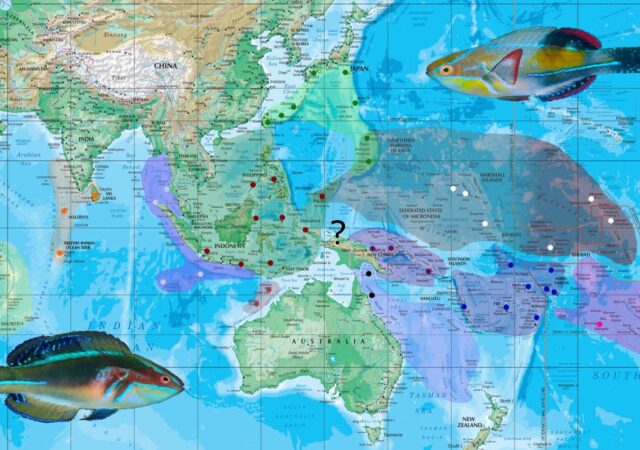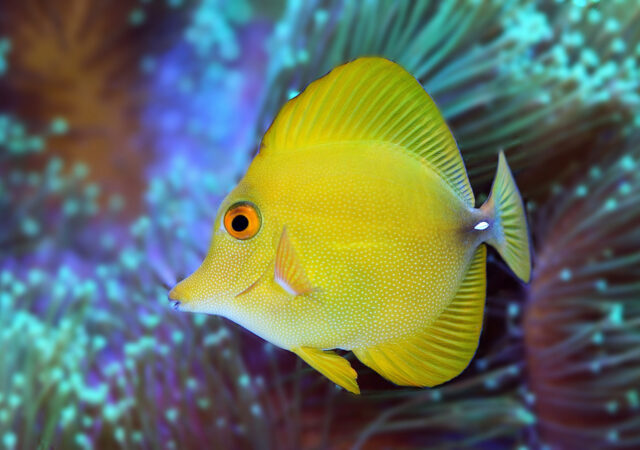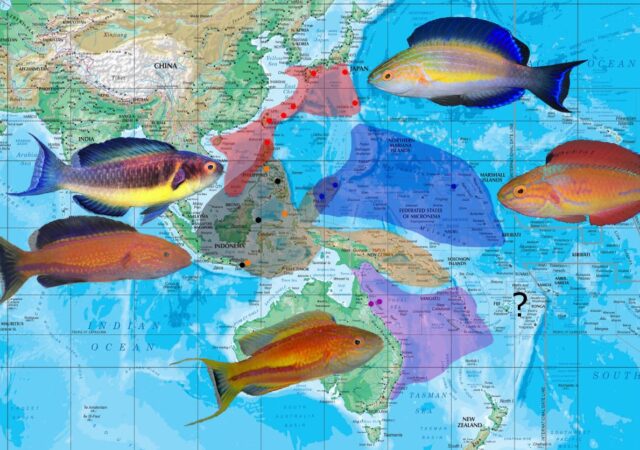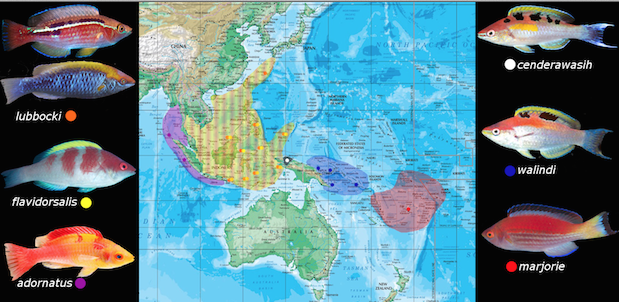The filamentosus group presents the reader with a collection of familiar, aquarium-friendly species, many of which are exuberantly colored and morphologically quirky. Despite some superficial differences in colors and fin shapes, the overall morphology strongly implies that this is the…
2.3 Fairy Wrasses: The exquisitus complex
Cirrhilabrus exquisitus is an unusually widespread and variable species which appears to form a lineage alongside the scottorum and cyanopleura groups, with all three sharing characteristically mid-length pelvic fins. Unlike any other species of Cirrhilabrus, the Exquisite Fairy Wrasse has…
The speciation, biogeography and hybridization of Zebrasoma
The family Acanthuridae boasts of charismatic, charming and iconic reef fishes that are immediately recognizable both in the field and in the trade. All eighty or so species spanning the six various genera have a single unifying trait, and that is…
1.2 Fairy Wrasses: The lunatus group
Cirrhilabrus johnsoni was first described in 1988 based on specimens collected in the Marshall and Caroline islands. This small species served as the twentieth member of a rapidly expanding genus, and was decidedly different with a crescent shaped caudal fin adorned…
1.1 Fairy Wrasses: The lubbocki group
The lubbocki group houses six members divided evenly into two separate but closely related clades. They are the lubbocki clade and the marjorie clade. All members of this group are small to medium sized species with a recurring red and white…
0.0 Fairy Wrasses: A review of the genus Cirrhilabrus
Fairy wrasses are some of the most ubiquitous fishes in the marine aquarium trade, which is why it may come as a surprise to learn that the group has never received a serious taxonomic review. The scientific literature is filled…


